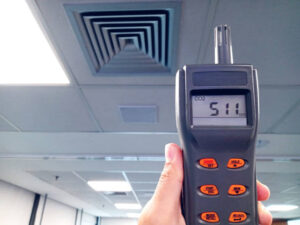Think about trying to make a cake without knowing how hot the oven is. You would either have a soggy mess or a brick. Industries feel like that when they don’t have oxygen analyzer. These useful tools check the amount of oxygen in gasses, which is more significant than you might believe. These little devices are used in factories, hospitals, and labs.

Let’s draw an image. There was a time when a glass maker couldn’t figure out why his glass was getting foggy. Spoiler: The oxygen in his furnace was to blame. More bubbles meant more oxygen, and nobody wants windows that are bubbly. The problem went away in a day after plugging in an oxygen analyzer. His glass now glows like a lake at daybreak.
What makes an oxygen analyzer work? Most sensors are the same, but not all of them are. Some employ zirconia, some use electrochemical components, and a small number use paramagnetic tricks. What’s the difference? A zirconia sensor can handle a lot of abuse and still work in hot weather. Electrochemical forms are great for low concentrations, such clean chambers or gas bottles for deep-sea divers. Paramagnetic gadgets show off by giving quick, precise readings.
Airlines aren’t flying blind either. They monitor the air in the cabin using these analyzers to make sure we all get the proper amount of oxygen, not too much or too little. Hospitals utilize them to help people breathe. They are used by dive shops to fill scuba tanks. Firefighters need them when things get dangerous. What’s at stake? Sometimes it’s a matter of life and death.
It’s not as easy as just plugging it in and forgetting about it. Calibration is something that analyzers really enjoy. Give them calibration gas at the proper level. If you don’t do this, your readings will be as reliable as a fortune teller who hasn’t been taught. Sensors that are old might drift, and sometimes they are lazy and slow. You should change them out every so often, or you might obtain wrong numbers.
Data logging is the icing on the cake. New analyzers can store records and show data for days, weeks, or months. All of a sudden, you’re not simply reacting to problems; you’re forecasting them. Strange hours of spikes? Someone might have left a hatch open, or there might be a leak in the system. The numbers don’t lie.
It can be hard to find the problem when you’re troubleshooting. A clogged filter or a leaky fitting might sometimes be the problem. A technician once spent half a day looking for a mistake, only to find that someone had used the wrong calibration gas. A small problem that caused a lot of trouble!
Oxygen analyzers are a lifesaver for persons who work in high-stakes situations. They can smell disaster right away. They’re like that one friend who always knows when the milk is about to go bad. And even though they don’t do magic, they keep everyone safe, from factory workers to patients in intensive care.
If you see a buzzing factory or someone with a welding torch, keep in mind that there is probably an oxygen analyzer nearby, quietly performing its work. Like a member of the team behind the scenes making sure the show goes on.